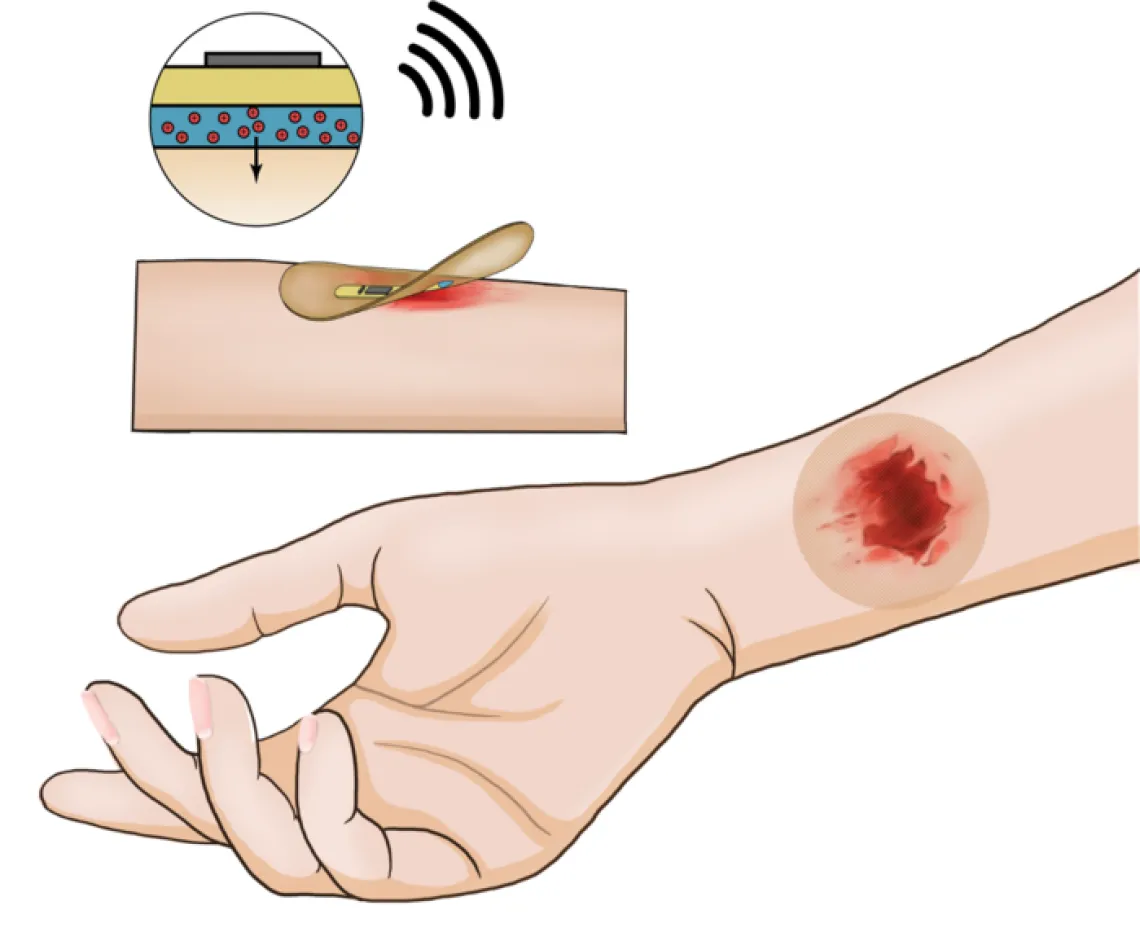Wireless smart bandage provides new insights on healing chronic wounds
Research from the Gurtner Lab recently published in Nature Biotechnology explores a new type of bandage that combines wireless electrical stimulation and biosensors to bring hope to patients with slow-to-heal injuries.

Drawing of wireless smart bandage on human arm.
CREDIT: JIAN-CHENG LAI, BAO RESEARCH GROUP @ STANFORD UNIVERSITY

Some wounds just won’t heal. Infections, diseases like diabetes, and suppressed immune systems often stack up to slow healing. Chronic wounds can last months and lead to anxiety and depression. In the worst cases, they are life threatening. Cost of treatment has soared to $25 billion each year.
So far, however, solutions for treating chronic wounds have been few and far between, but researchers at Stanford University (and the University of Arizona) now report that they have developed a wireless smart bandage that has shown promise in speeding up tissue repair by monitoring the wound healing process and treating the wound simultaneously.
The researchers say in a paper published November 24th in Nature Biotechnology that their device promotes faster closure of wounds, increases new blood flow to injured tissue, and enhances skin recovery by significantly reducing scar formation.
Co first-author of the paper is Gurtner Lab member and Assistant Research Professor in the Department of Surgery, Artem Trotsyuk, PhD.
